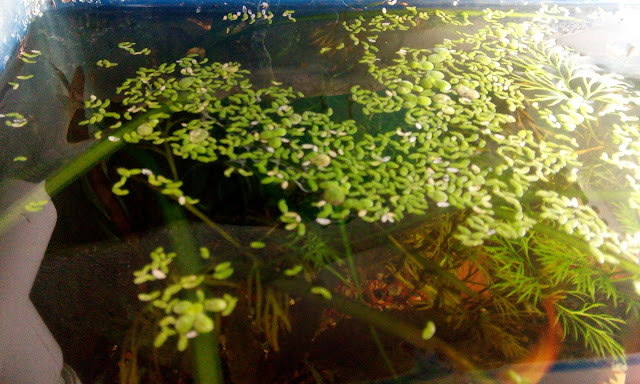When stocking your tank with fish it is important to consider tank space, bio-load the tank can support, fish compatibility, nature etc.
Space: Many fish in the local fish stores are juvenile. Hence it is important to know how big they will grow. If you have a small tank shark fish, Oscar, flowerhorn will soon outgrow the tank. Such fish need big tanks for them to live comfortably.
I had set up a tank of African cichlids. I brought them when they were hardly a few centimeters long taking the word of my local fish store that the won't grow beyond a few inches. Soon one of them grew bigger than others and started harassing the others. Other fish in the tank, terrorized by this one fish, did not grow well and finally died of stress and disease. When I brought them my fish load was 1 inch/2.5 gallons. When they grew up the ratio changed to 1 inch/0.7 gallon. Had I housed the fish in a bigger tank they would have thrived even with the aggression of the alpha fish.
Even if you buy small fish the number of fish is also important for the space they need to live freely and healthily. The number of fish is called fish load. The prescribed fish load is 1 inch of fish per gallon. While calculating the fish load also take into account the maximum size the fish will grow.
 |
| Assortment of Tetras with some other fish. They are in groups of 3-4 hence don't bother other fish. |
Bio-load: Another reason for the 1 inch per gallon guideline apart from space is management of fish waste produced in the tank. More the number of fish greater is the waste produced. This will necessitate frequent water changes to remove the waste and maintain water quality. The reason I call 1 inch per gallon a guideline and not rule is two fish fitting the length may produce different quantities of waste. For example 2 adult Guppies each around 1 inch in size will produce less waste than a 2 inch goldfish.
You are generally prescribed to do a partial water change every week. This is based on the assumption that you tank is stocked in proportion to the waste processing abilities of the tank. Waste in the tanks is processed by the microbes which colonize your tank. A new tank has few or none of these microbes, that is why you are advised the two week waiting period before adding fish. Though the microbes grow fast they take time to mature enough to manage all the waste. A given colony of these microbes in a given size of tank has a limit to the amount of waste it can process even after maturing. Hence it is advisable to add few fish at a time giving the microbe colony to mature and not over stock your tank.
You may consider adding hardier fish like Guppies, platys, and mollies before going for the more difficult to keep fish like neon tetra, cardinal tetra, harlequin rasbora, etc. This way the tank won't sit empty, they fish will aid the microbes to grow faster and they can survive the initial beating of ammonia spike.( This is if you can't wait I do not advise it)
Compatibility: There are many beautiful fish you will want to keep but you have check their compatibility first. Some fish attack other fish because they may be territorial, or aggressive or just naughty. Many cichlids, breeding pairs of fish can be very territorial, a male fighter fish will be aggressive towards other males or veil-tail fish he perceives as a competition for mating, Oscars will eat any fish that fits in their mouth, tiger barbs, some tetras can be very restless and naughty when alone and will harass other fish by nipping their fins.
Personally I prefer one species in one 10 gallon tank. If I do keep multiple species make sure of their nature and ways to neutralize their aggression. For example I always keep tetras in schools of 5-6 this ensures they are engrossed in each other and don't bother other fish. I keep my tanks heavily planted to provide ample hiding space.
 |
| Small tank with single species of dwarf rainbow fish. |
Goals: Finally have clear goals with your aquarium and choose you fish accordingly. If you want pet-like interactive fish go for the larger cichlids like flowerhorn, Oscars but they will need more meticulous pet-like maintenance too. Besides this cost of the aquarium and it's equipment will increase too.
If you wish to aquascape the tank go for smaller fish. Fish like koi, goldfish, pleco, and silver dollar will eat the live plants. While larger fish like cichlids have a tendency to move the substrate around causing the uprooting of the plants. Tetras, rasboras, dwarf chichlids, small barbs, bettas, rainbows, angelfish, discus, platys, fancy Guppies, and mollies are ideal for planted tanks.
If you wish for a low maintenance tank keep the fish load low and keep hardy fish like Guppies, mollies, platys etc.
Some closing thoughts- be responsible while choosing your fish. Make sure you don't bite more than you can chew with a large fish or huge fish load unless you have the infrastructure and bandwidth to support them. They are living creatures and you assume the responsibility of their life when you buy them.
Feel free to share you thoughts and queries in the comments. Let me know about your experience with your fish their compatibility, aggression, and ways you dealt with the issues. Any comments, tips to improve the blog, topics for future posts are also welcome!













